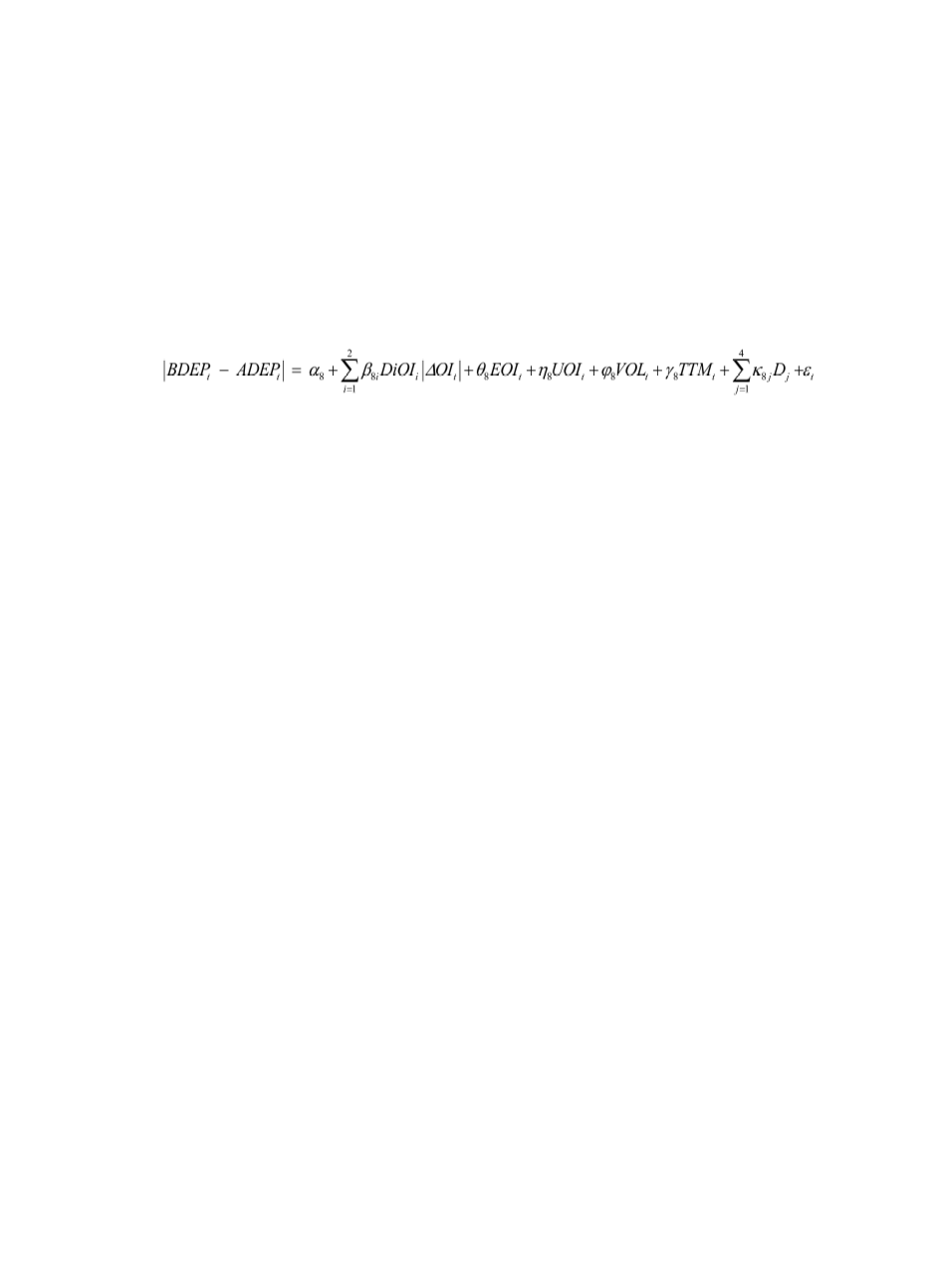

期貨未平倉量的資訊內涵及其交易活動之研究
164
According to implication (6), increases in open interest are associated with symmetrical
increase in the bid and ask depth. This study uses Model (8) to test the relationship between
open interest and market depth, using
VOL
,
EOI
,
UOI
,
TTM
and dummies of the day-of-the-
week as control variables. Model (8) examines the association between changes in open
interest and the symmetricity in bid and ask depth. The model is specified as:
(8)
where |
BDEP – ADEP
| is the absolute difference between the bid depth (
BDEP
) and ask
depth (
ADEP
), measuring the extent to which the buy side liquidity provision differs from
the sell side liquidity provision, or the depth imbalance. The greater depth imbalance (large
|
BDEP – ADEP
|) indicates more convergence, or less divergence, in traders’ opinions.
Coefficients
β
81
and
β
82
respectively capture the effect of
OI
increase and
OI
decrease on the
depth imbalance. According to implication (6), a divergence in opinions would lead to higher
open interest and increased liquidity provision on both sides of the market, thus a smaller
|
BDEP – ADEP
|. An inverse relationship (negative
β
81
) between increment of open interest
and |
BDEP – ADEP
| is consistent with implication (6). On the other hand, a convergence in
opinions would lead to reduction in open interest (negative |
ΔOI
| and positive
DiOI
2
|
ΔOI
|)
and more asymmetric bid and ask depths (larger |
BDEP – ADEP
|). This predicts a positive
β
82
in Model (8).
4. Empirical Results
4.1 The Descriptive Statistics
Table 2 provides descriptive statistics for the variables. The open interest (
OI
) and
expected open interest (
EOI
) are similar in terms of their statistics. This is not surprising
because the
EOI
roughly reflects the expected open interest at the beginning of the trading
day, which is approximately equal to yesterday’s closing
OI
level. The unexpected open
interest (
UOI
) is very different from the
OI
t
and
EOI
t
. The mean of the unexpected open
interest is small (less than 1%) relative to that of the
OI
and
EOI
, however, its standard
deviation exceeds one fourth of that of the
OI
and
EOI
. The substantial variation in
UOI
relative to its mean indicates that there could be rich information content in the series.


















